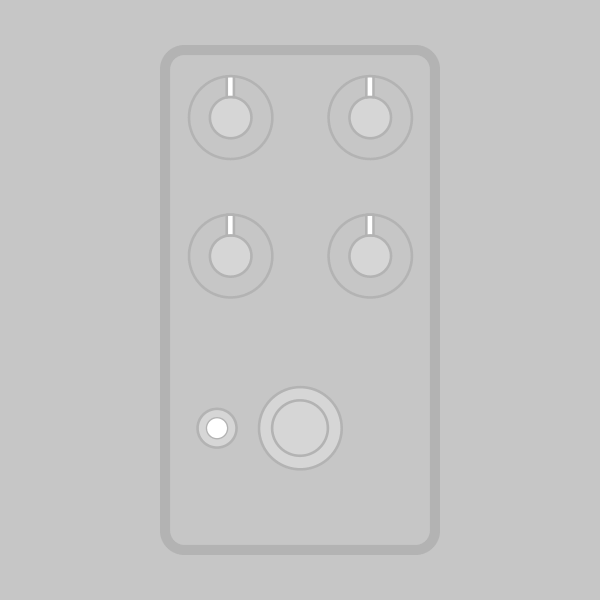
The Elite Boost/Preamp is based on the active preamp of the Fender Elite Stratocaster, originally produced from 1983-1985, often referred to by Fender as the “MDX” circuit. A modified version of the same circuit was used for both the Eric Clapton and Richie Sambora signature Stratocasters after the Elite went out of production.
The preamp circuit is divided into two halves, each with its own function. The first stage is a straight transistor boost that provides around +12dB of gain. In the original circuit, the guitar’s volume knob is wired between the two halves of the circuit. This means that with the volume knob at full, the gain is boosted, and unity gain is found down around 7.
The second stage is a discrete op-amp topology using transistors, similar to those found in the BOSS BD-2 Blues Driver, OD-2 and OD-3. The gain is boosted and the highs and lows are cut, resulting in a midrange emphasis. A potentiometer at the output blends between the mid-boost stage (an additional +6dB on the Elite and +15dB on the Clapton variant) and the clean boost.
Our Elite Boost/Preamp project is a direct pedal conversion of the preamp circuit. You can build the original Elite version, which was most notably used by Ty Tabor in conjunction with the Lab Series L5 Preamp, or the later Clapton version.
In converting this circuit to a pedal, some of the characteristics are necessarily different, since it doesn’t have the same type of direct interaction with the guitar’s pickups. However, as long as it is connected directly to the guitar as the first pedal in the chain, it should perform pretty closely, with the main difference being the lack of an integrated volume knob for direct adjustment of the boost on the guitar itself.
We have also developed a set of modifications that change the character and push the midrange frequency a bit higher, which some may find more useful now that it has been converted to pedal format. This is the column labeled “M” in the parts list, and is described further in the build notes.